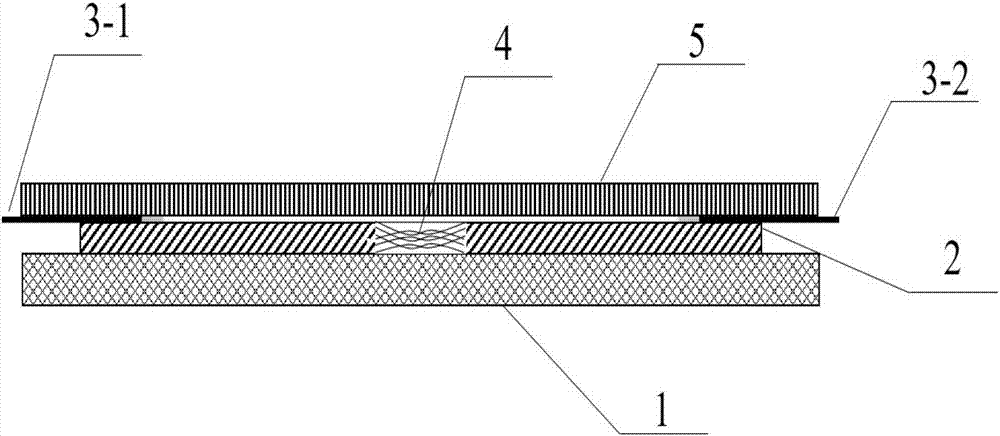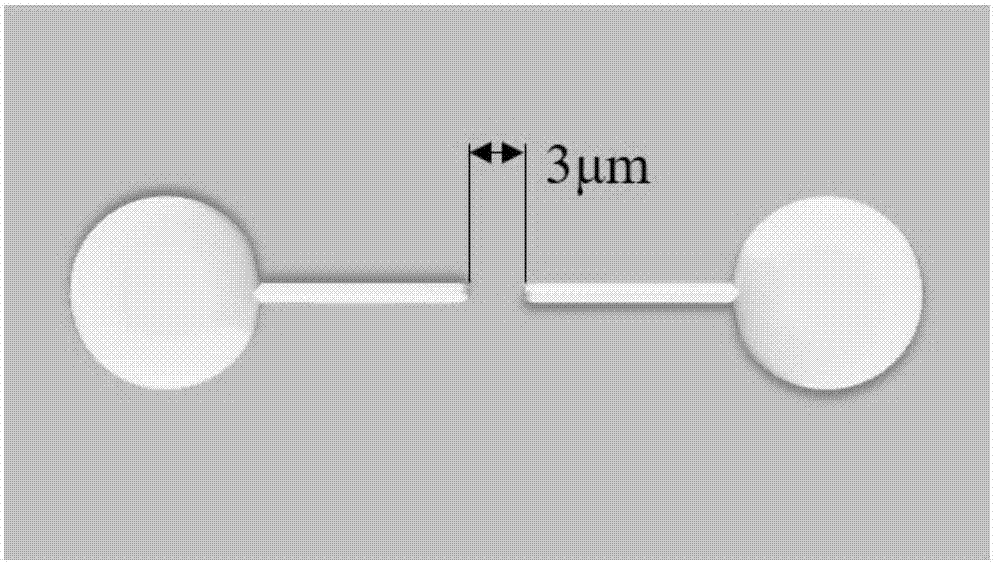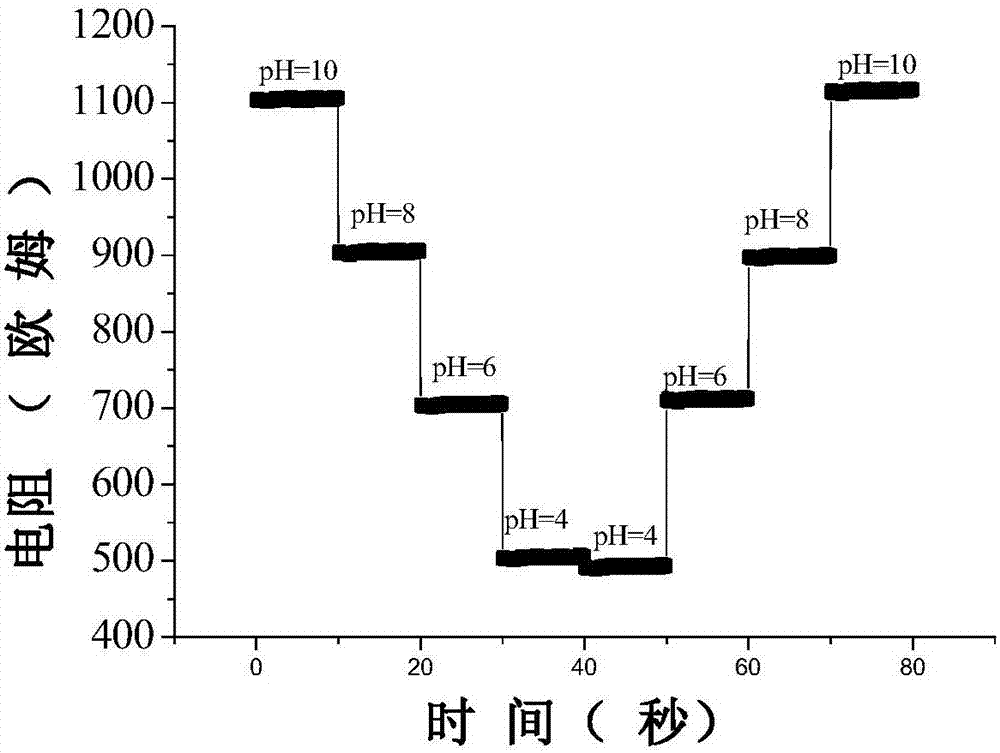Flexible biological pH sensor based on nano wire texture and preparation method thereof
A pH sensor and nanowire technology, applied in the field of nanowire textured flexible biological pH sensor and its preparation, can solve the problems of inability to use for a long time, allergies, surface friction, etc., to eliminate allergic and uncomfortable reactions, and avoid direct contact , the effect of avoiding interference
- Summary
- Abstract
- Description
- Claims
- Application Information
AI Technical Summary
Problems solved by technology
Method used
Image
Examples
Embodiment 1
[0047](1) The flexible PI substrate with a thickness of 100 μm is subjected to oxygen plasma treatment, and the specific parameters are: vacuum degree 0.1Pa, working pressure 20Pa, working gas O 2 , flow rate 20sccm, radio frequency power 60w, room temperature treatment 5min. After plasma treatment, hydrophilic groups are introduced on the surface and the adhesion of the surface is increased, and then cut into 1×1cm 2 films.
[0048] (2) Design such as figure 2 Photolithography template, on the processed PI sheet, make an electrode template through ultraviolet exposure, and deposit Ti / Au electrodes with a thickness of 110nm at a distance of 3μm by electron beam evaporation. Post-bake at 120°C for 2 minutes, expose for 20 seconds, and develop for 1 minute. Electron beam evaporation parameters: vacuum degree 5×10 -6 mbar, Ti / Au thickness is 10 / 100nm respectively. The electrodes at both ends are led out by pressure welding. A microchannel electrode layer is prepared.
[0...
Embodiment 2
[0053] (1) Treat the flexible PET substrate with a thickness of 100 μm in oxygen plasma, specific parameters: vacuum degree 0.1Pa, working pressure 20Pa, working gas O 2 , flow rate 20sccm, radio frequency power 60w, room temperature treatment 5min. After plasma treatment, hydrophilic groups are introduced on the surface and the adhesion of the surface is increased, and then cut into 1×1cm 2 sheet, making a flexible substrate.
[0054] (2) Treat the single-walled carbon nanotubes to introduce carboxyl functional groups. The parameters are: take 15 mg of single-walled carbon nanotubes and disperse them in 9 mL of concentrated nitric acid (65% by mass fraction) and 27 mL of concentrated sulfuric acid (98% by mass fraction). Stir in an oil bath for 45 min at ℃, wash the carbon nanotubes to neutrality, add 2 mg of dried carbon nanotubes into a prepared 10 ml solution of sodium dodecylbenzenesulfonate (SDBS) solution with a mass fraction of 1%, and Ultrasonic dispersion at 300W f...
PUM
| Property | Measurement | Unit |
|---|---|---|
| thickness | aaaaa | aaaaa |
| pore size | aaaaa | aaaaa |
| electrical conductivity | aaaaa | aaaaa |
Abstract
Description
Claims
Application Information
 Login to View More
Login to View More - R&D
- Intellectual Property
- Life Sciences
- Materials
- Tech Scout
- Unparalleled Data Quality
- Higher Quality Content
- 60% Fewer Hallucinations
Browse by: Latest US Patents, China's latest patents, Technical Efficacy Thesaurus, Application Domain, Technology Topic, Popular Technical Reports.
© 2025 PatSnap. All rights reserved.Legal|Privacy policy|Modern Slavery Act Transparency Statement|Sitemap|About US| Contact US: help@patsnap.com



